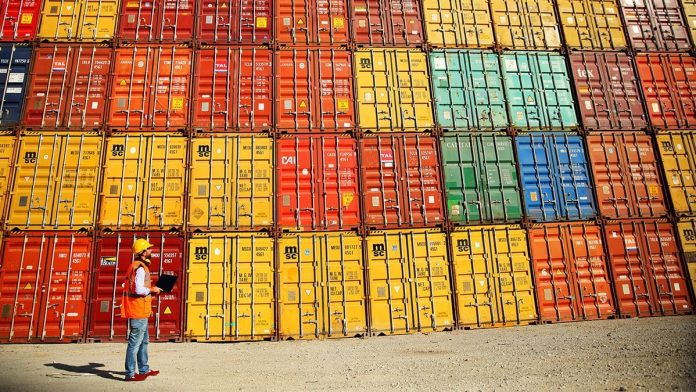The internet of things (IoT) is changing the shape of many businesses. Not only does it herald greater visibility of asset effectiveness, improve operational efficiencies, and facilitate more informed decision making, it is also opening up new ways of doing business. Its reach is far and wide. While capital-intensive industrial manufacturing organizations were quick to seize the opportunities IoT offered at an early stage; the benefits IoT can bring to global supply chains promises to deliver equally significant value.
Traceability of a consignment within the supply chain, together with its current location, is an essential part of logistics management today. However, the IoT is enabling much more than the basics. Now, it is possible to know the environmental conditions any consignment is exposed to. In many industries, the packaging consists of custom-built shipping containers, rigs, and racks that represent significant value themselves. Being able to trace them and their current condition can be as critical as the goods themselves.
Consider a manufacturer shipping vehicle windshields in a container: if the container is dropped or receives a significant side-impact from another container, there is a high probability the windshields will be broken. If the damage is only discovered on arrival, there is potential disruption to the whole production process, resulting in costly downtime.

Consider, alternatively, a shipment of a heat-sensitive chemical compound, used in a production process: prolonged exposure to high temperatures would render the compound unusable. Visibility of these scenarios would allow prompt action to be taken to contact the customer of the likelihood of damage and a replacement shipment to be sent immediately.
Consider also a situation where, for example, a buyer of fresh produce for a supermarket might pay based on how carefully the fruit and vegetables have been transported, taking note of the ambient temperature, light conditions, and humidity. Other use case examples include vaccine shipments, rental cars, and crop seeds.
To make this possible across geographical boarders and be completely self-contained relies upon cellular communication and battery-powered IoT technologies.
To date, designing an asset tracker has been extremely challenging due to several technical considerations. Firstly, for it to be truly global, it needs to be able to authenticate and operate internationally no matter who the operator might be. Secondly, to accommodate as many different use cases, it needs to be completely self-contained, meaning it needs to operate from its battery for months and years.
Cost is another consideration. With an affordable price, asset trackers can be placed on every individual pallet or product, rather than the consignment as a whole. Overall cost, including that of connectivity, is crucial – the lower the price, the more use cases the trackers can serve.
For the engineering team, developing a battery-powered asset tracker with cellular connectivity has several critical constraints. Operating off a battery introduces the need for low power integrated circuits (ICs) to be used throughout. Maintaining operation for months and years without the need to change the battery, requires prudent power management, whatever the use case.
Likewise, incorporating cellular connectivity with a global reach, while maintaining attractive connectivity plans, into hardware-based SIM solution is needed for connectivity to be able to connect to tier-one mobile networks globally. Size is also a necessary aspect of any asset tracker. Not only does it need to be extremely robust, but it also needs to be small enough to be attached to small assets – such as beer kegs, for an example.
Design engineers faced with this development task would find the Altair’s cellular IoT chipset – ALT1250 system-on-chip, a viable contender on which to base their design. This
Highly integrated modules – featuring dual-mode radios, low-power micro-controllers, a GNSS receiver, an integrated SIM (iSIM), and a battery, all in an ultra-thin package – are just the ticket. Such high levels of integration make it possible to keep the overall tracker footprint extremely small, and it is envisaged that a full-featured tracker module could be accomplished within a 100 mm2 footprint.
It is now possible and commercially viable to track anything, anywhere.
The potential use cases for asset tracking applications can be found everywhere. Whether you wish to track the transit cases for expensive and sensitive electronics test equipment or to provide traceability of temperature-sensitive foods from the factory to the food service provider, a fully integrated cellular IoT ultra-low power chipset that can seamlessly connect to cellular networks enable the next generation of asset tracking.
About Dima Feldman
Dima Feldman is the Vice President of Product Management and Marketing at Altair Semiconductor, a Sony Group Company. Dima is responsible for product management, marketing, and solution architecture. He works closely with development teams, customers, and partners to build innovative IoT solutions.
About Aviv Castro
Aviv Castro is the Vice President of Business Development at Altair Semiconductor, a Sony Group Company. Aviv oversees all aspects of Altair’s business development, from strategic planning to profitability analysis. He builds partnerships with key decision-makers and develops strategic alliances to further Altair’s relationships.

